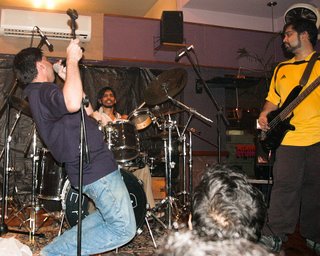Change itself is the only true constant in life. That phrase rings closer and closer to home with each passing day given the rate at which advancements in technology in almost every field imaginable are being made. Nowadays, with every other person possessing enough skills to be considered half-a-techie, it is becoming increasingly difficult to catch up to where the cyber-world is moving. It makes one wonder that how are we, as people who supposedly benefit from these advancements, going to be affected by it.
The area of technology affecting our lives at home has been debated upon a countless number of times. Intel recently made the first real breakthrough towards having a digital home through by rolling out VIIV technology. Through this, home entertainment and all forms of communication can fit in one box and accessed from various places from around the house. The implications of technology are not limited to the home only and are affecting more and more people in their work lives and skills pertaining to them.
Newer communication methods have made it easier to work from home. High-speed internet coupled with e-mail and web-conferencing does away with the need for a person to be physically present in the workplace. Documents can be e-mailed and web-conferencing can always be employed when a constant presence is essential Services offered by numerous companies like Skype and Net2Phone allow users to make telephone and video calls over the internet. This has made web-conferencing easier and much more convenient for not only the business user but the average home-user as well.
An increase in such technology-related advancements and creations will signal a gradual demise of the traditional brick-and-mortar business along with the birth of what is referred to as ‘hidden economies’. People working from home for companies that are not located in the same country as them earn in local as well as foreign currencies, while spending that income in their home country. Teleworking has also assisted in the recent increase of cafés with high-speed wireless internet and customised corners for coffee-fans to station their laptops on and work. The reasons behind users logging on from coffee shops while having their own reserved corners are due to the environment being less stressful than a workplace and offering less distraction then at home.
Faster and easier communication has also served in flattening the tall hierarchical structures in the workplace. It has become much easier for a person situated near the bottom of the hierarchy to communicate directly to another placed near the top. This serves to hasten up the decision-making process since a person does not rally through numerous individuals to get the point across to the top management anymore. This also creates the need for working individuals to possess greater communication skills and develop faster decision-making since faster and effective communication would require a person to display quick judgement, leadership and initiative (in an ever-changing world, you cant stick to one concept for too long). There will be a greater need for individuals to think far ahead, develop strategies and have the ability to be able to see it through.
There will be a lesser need for manual labour since most of the manual work is expected to be done by robots. That only leaves the task of supervising the robots and ensuring the whole process goes trouble-free. Also, generic skills such as reading, writing, and problem-solving will also be in demand since individuals in almost all fields of work will be expected to deal with little gadgets now and then.
On the social front, with more and more women entering the workplace and things becoming easier for housewives to work as well, we will witness an increase in dual-income families or, in the case of single-parents, single-income families. However, with work potentially spilling into overtime (or time reserved for children at home), there could be an increase in conflicts and crossovers between work and family life.
Technology is not just changing the way we live or work. It is currently in the process of reshaping entire industries. Entrepreneurs with small-scale businesses catering to a certain niche in the market only are now popping up everywhere. Collectively, they pose a significant threat to large-scale corporations serving the same product or service on a wider level.
At this point it wouldn’t be practical to predict whether technology is good or bad, what is important is that it is here to stay. Whether one likes it or not, technology will infiltrate every aspect of a person’s life: at work, home or during play. Sooner or later individuals will have to learn to adapt to it. The way things are going, the sooner done the better.
First Published:
Spider
December 2006













